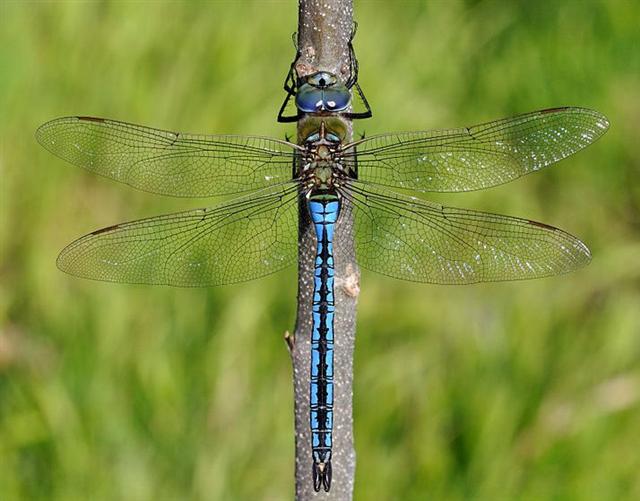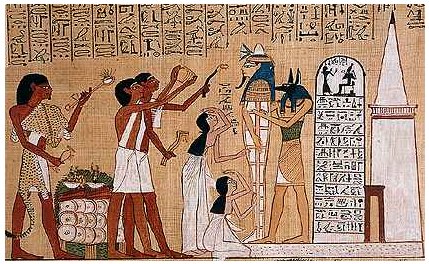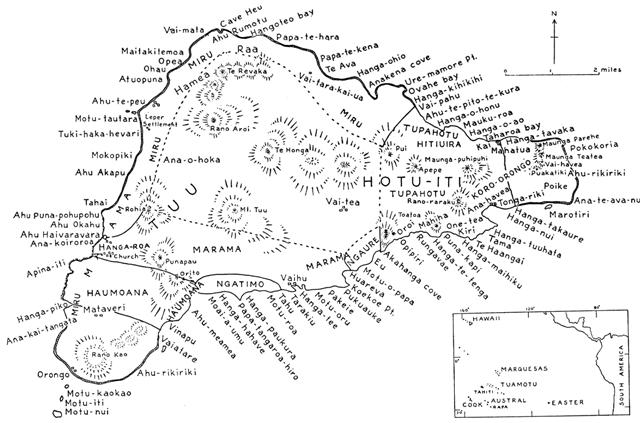... From a religious point of view, the high regard for flies, whose increase or reduction causes a similar increase or reduction in the size of the human population, is interesting, even more so because swarms of flies are often a real nuisance on Easter Island, something most visitors have commented on in vivid language.
The explanation seems to be that there is a parallel relationship between flies and human souls, in this case, the souls of the unborn. There is a widespread belief throughout Polynesia that insects are the embodiment of numinous beings, such as gods or the spirits of the dead, and this concept extends into Southeast Asia, where insects are seen as the embodiment of the soul ...

Where Fakataka delivers her son there is a golden bird who flies above and this sign means the boy here will open his mouth and inhale his first breath of air:
... Fakataka swims and swims, reaching another land. She goes there and stays on the upraised reef in the freshwater pools on the reef, and there delivers her child, a boy child. She gives him the name Taetagaloa. When the baby is born a golden plover flies over and alights upon the reef. (Kua fanau lā te pepe kae lele mai te tuli oi tū mai i te papa).
Air contains oxygen and without it the 'fire' inside the bodies of creatures up on land will not survive. In ancient Egypt a bird feather signified 'air' and there were ceremonies for 'opening the mouth':
... The ahnetjer (Manuel de Codage transliteration: aH-nTr) depicted as an adze-like instrument, was used in the Opening of the Mouth ceremony, intended to convey power over their senses to statues and mummies. It was apparently the foreleg of a freshly sacrificed bull or cow with which the mouth was touched ... The ritual involved the symbolic animation of a statue or mummy by magically opening its mouth so that it could breathe and speak ...

The comments earlier above about flies as 'souls' waiting for their assigned children to be born - waiting to be recycled into new bodies - were made by Barthel when he discussed the meaning of the Bay of Flies (Hanga Takaure) on Easter Island:

This bay is located at the southern shore of the peninsula Poike in the east.
| Takaure
Fly; horse-fly. Vanaga.
A fly; takaure iti, mosquito; takaure marere ke, swarm. Churchill. |

It must here be noted that the Polynesians regarded all flying beings as of a kind, as manu rere ('flying beasts'). The Golden Plover was not exactly the same as a Horse Fly, but in general they were the same.
| Manu
1. Bird; manu uru, bird figure (like the drawings or wooden figures once found in caves and houses); manu va'e e-há, four-legged bird (name given to the first sheep introduced to the island. 2. Insect. manupatia, wasp. 3. Bird's egg: mâmari manu. 4. Wild, untamed. 5. Song in which is expressed the desire to kill someone, or in which a crime is confessed: he-tapa i te manu (see tapa). Vanaga.
Bird; manu uru, kite; manu rikiriki, insect. P Pau.: manu, bird, insect, brute. Mgv.: manu, bird, beast. Mq., Ta.: manu, bird, insect. Manu nave, great abscess, bubo. Churchill.
Manu i te raá = comet. Barthel.
Manu vae eha, 'birds with four legs'. Barthel 2. |
| Several of the early missionaries comment with a fine sense of humor upon the mistake the islanders made in calling the cow when first seen a bird. This is the word which led the good missionaries into the error of their own ignorance.
Manu is as wholesale in its signification as our word animal, it is generic. In the paucity of brute mammalia the first missionaries found this general term most frequently used of birds, and it was their and not a Polynesian mistake to translate manu into bird.
In the material here collected it will be seen that the significations animal and bird are widely extended. In the Paumotu insects are included; the same is true of Mota, where manu signifies beetle as well as bird.
Nor is its applicability restricted to earth and air; it reaches into the sea as well. Samoa uses i'amanu (fish-animal) for the whale ... (Churchill 2) |
According to Allen:
"Its [Musca Borealis] chief components Fl. 41, 33 [not listed by me], 35, and 39, of Aries were common to the 28th nakshatra, Barani, Bearer, or Apha Barani, - Yama, the ruler of the spirit world, being their presiding divinity ..."



